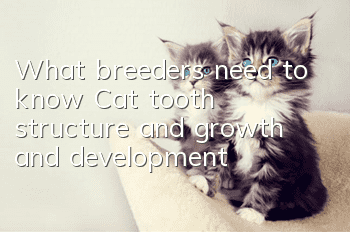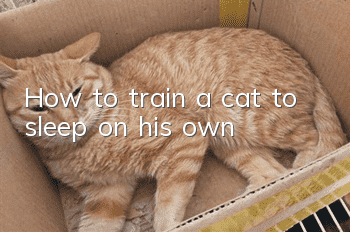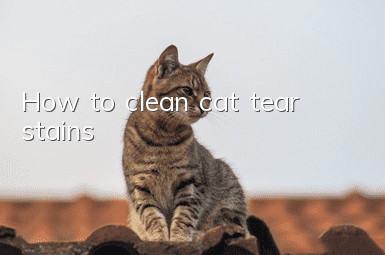What breeders need to know: Cat tooth structure and growth and development

Cat’s teeth are very important to the cat’s overall health.
For a qualified breeder, the evaluation of a cat’s teeth is also an important part of judging a cat’s appearance.
If your cat’s teeth are broken, crooked, or damaged, it could mean the end of his career.
However, if you take some reasonable precautions in advance, you can avoid permanent teeth from becoming crooked and falling out.
Breeders should understand how cat teeth develop and what the correct structure of cat teeth looks like.
01. Classification of four types of teeth
Incisor teeth: The incisors are closely arranged and very small, used to tear off the flesh from the bones
Canine teeth: conical, sharp. Penetrates the prey's spinal cord, killing the prey. It can also be used to easily tear off the meat of prey: premolars: cut food into small pieces that can be swallowed directly
Molars: also cut food into as small pieces as possible
Just like people, kittens also have two sets of teeth during growth and development
Deciduous teeth: 26 in total, 12 incisors, 4 canines, 10 premolars Permanent teeth (adult teeth): 30 in total, 12 incisors, 4 canines, 10 premolars, 4 molars
What should be pointed out here is that in permanent teeth, the number of teeth in the upper and lower jaws is inconsistent:
The upper jaw has 6 incisors, 2 canines, 6 premolars and 2 molars
The lower jaw has 6 incisors, 2 canines, 4 premolars and 2 molars
02. Permanent teeth, anatomical structure
Maxillary side view:
▲Incisor (incisor) canine (canine) premolars (premolars) molar (molars)
Side view of mandible:
Maxillary view from above:
Top view of mandible:
Anatomically, the representation of cat's teeth is similar to that of human teeth. The code of each tooth is represented by a letter + a number. They are as follows:
I - incisor
C - canine teeth
P - Premolars
M - molars
The code number for any tooth is from the middle of the jaw to the two sides.Edge number.
Add whether the teeth are on the left or right, upper jaw or lower jaw, plus the order of the teeth. Each tooth has its own unique number. For example: C 1 on the upper right refers to the first canine tooth on the right side of the upper jaw.
03. Codes for deciduous teeth and permanent teeth
Because the teeth are aligned left and right, and every animal has an upper jaw and a lower jaw.
Therefore, in the code given below, the left and right will not be added. You can add it yourself when needed. But the upper and lower jaws are different, so the lower and upper jaws are given separately.
Code for deciduous teeth: Upper jaw: I1 I2 I3 C1 P1 P2 P3
Mandibular: I1 I2 I3 C1 P1 P2
Permanent tooth code: Upper jaw: I1 I2 I3 C1 P1 P2 P3 M1 Mandibular: I1 I2 I3 C1 P1 P2 M1
04. When do deciduous teeth and permanent teeth appear?
The time it takes for the first deciduous teeth and the first permanent teeth to erupt varies from cat to cat.
However, through long-term observation, we have obtained the data in the table below, which has certain reference value.
Normally, deciduous teeth will be squeezed out by permanent teeth. Therefore, you may see slight gum bleeding, but it is not a big problem, so don’t worry.
If the permanent teeth have fully grown in and there is an abnormal tooth next to the permanent teeth, you need to find a veterinarian to remove it.
Here are a few more knowledge points to share with you:
When 4 weeks old, the 12 front teeth will grow in, and the female cat will reduce the number of feedings at this time because it will hurt.
By 6 weeks old, all 26 teeth have grown in, including the canine teeth. At this time, most female cats will take the initiative to wean the kittens.
At 30 weeks of age, all 26 baby teeth are lost and replaced by 30 permanent teeth.
- Why do cats protect their food? How to protect cats’ food?
- Can cats eat watermelon?
- What's going on with the black spots around the cat's mouth?
- Cat vomits and refuses to eat food, but is in good spirits?
- Why does the cat at home keep meowing?
- How to deworm a cat? Cat deworming guide!
- How will cats react to an earthquake?
- Do cats remember their owners’ faces?
- What should I do if my white cat is anemic? What is the best thing for white cats to eat when they are anemic?
- Six types of cats that are good-looking, cheap and easy to keep



